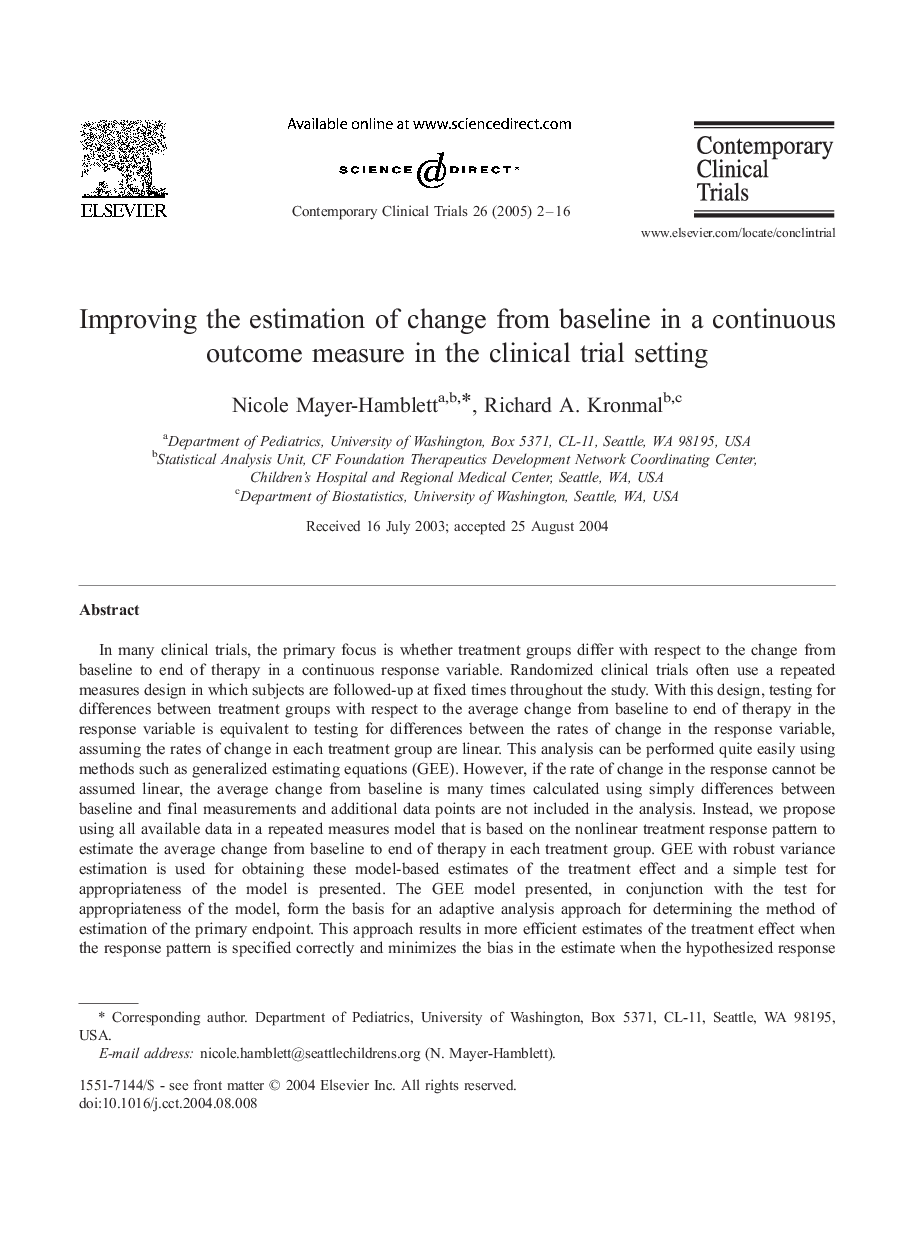| کد مقاله | کد نشریه | سال انتشار | مقاله انگلیسی | نسخه تمام متن |
|---|---|---|---|---|
| 9293489 | 1231550 | 2005 | 15 صفحه PDF | دانلود رایگان |
عنوان انگلیسی مقاله ISI
Improving the estimation of change from baseline in a continuous outcome measure in the clinical trial setting
دانلود مقاله + سفارش ترجمه
دانلود مقاله ISI انگلیسی
رایگان برای ایرانیان
کلمات کلیدی
موضوعات مرتبط
علوم پزشکی و سلامت
پزشکی و دندانپزشکی
پزشکی و دندانپزشکی (عمومی)
پیش نمایش صفحه اول مقاله

چکیده انگلیسی
In many clinical trials, the primary focus is whether treatment groups differ with respect to the change from baseline to end of therapy in a continuous response variable. Randomized clinical trials often use a repeated measures design in which subjects are followed-up at fixed times throughout the study. With this design, testing for differences between treatment groups with respect to the average change from baseline to end of therapy in the response variable is equivalent to testing for differences between the rates of change in the response variable, assuming the rates of change in each treatment group are linear. This analysis can be performed quite easily using methods such as generalized estimating equations (GEE). However, if the rate of change in the response cannot be assumed linear, the average change from baseline is many times calculated using simply differences between baseline and final measurements and additional data points are not included in the analysis. Instead, we propose using all available data in a repeated measures model that is based on the nonlinear treatment response pattern to estimate the average change from baseline to end of therapy in each treatment group. GEE with robust variance estimation is used for obtaining these model-based estimates of the treatment effect and a simple test for appropriateness of the model is presented. The GEE model presented, in conjunction with the test for appropriateness of the model, form the basis for an adaptive analysis approach for determining the method of estimation of the primary endpoint. This approach results in more efficient estimates of the treatment effect when the response pattern is specified correctly and minimizes the bias in the estimate when the hypothesized response pattern is misspecified. We are motivated by examples in the cystic fibrosis (CF) clinical trial setting and demonstrate the potential for this approach in reducing the sample size required for future CF clinical trials.
ناشر
Database: Elsevier - ScienceDirect (ساینس دایرکت)
Journal: Contemporary Clinical Trials - Volume 26, Issue 1, February 2005, Pages 2-16
Journal: Contemporary Clinical Trials - Volume 26, Issue 1, February 2005, Pages 2-16
نویسندگان
Nicole Mayer-Hamblett, Richard A. Kronmal,